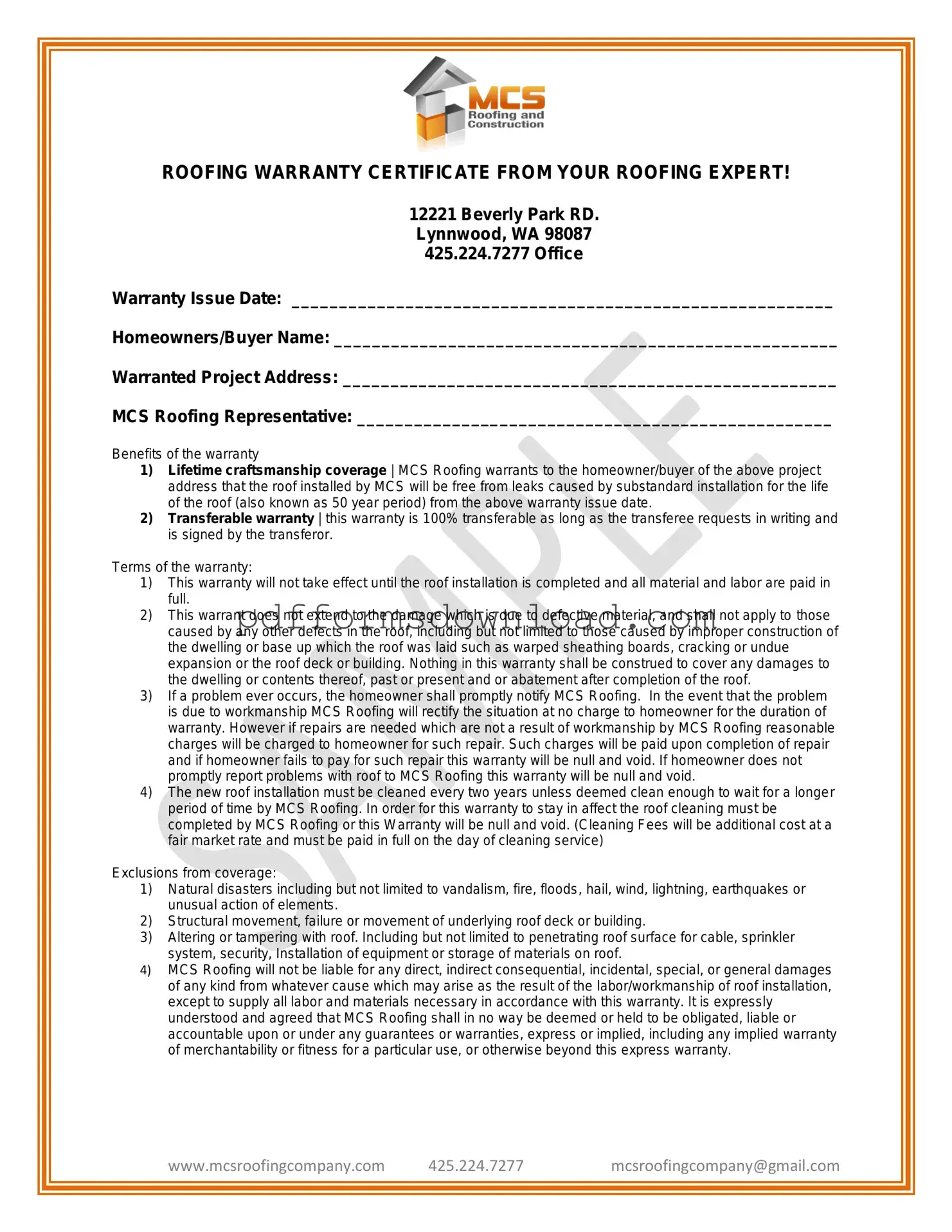What is covered under the Roofing Warranty Certificate?
The Roofing Warranty Certificate provides two primary benefits. First, it offers lifetime craftsmanship coverage, ensuring that the roof installed by MCS Roofing will remain free from leaks caused by substandard installation for a period of 50 years from the warranty issue date. Second, the warranty is fully transferable, allowing new homeowners to benefit from the coverage as long as the transfer is requested in writing and signed by the original homeowner.
What conditions must be met for the warranty to be valid?
For the warranty to take effect, the roof installation must be completed, and all materials and labor must be paid in full. Additionally, the homeowner must promptly notify MCS Roofing of any issues that arise. If the problem is due to workmanship, MCS Roofing will address it at no charge. However, if the issue is not related to their workmanship, reasonable charges will apply. Failure to report problems in a timely manner or to pay for necessary repairs may result in the warranty becoming void.
How often does the roof need to be cleaned to maintain the warranty?
The roof installation must be cleaned every two years to keep the warranty in effect. MCS Roofing will determine if a longer period is appropriate based on the condition of the roof. Importantly, the cleaning must be performed by MCS Roofing, and any associated fees will be charged at fair market rates, payable on the day of service.
Are there any exclusions to the warranty coverage?
Yes, there are several exclusions. The warranty does not cover damages caused by natural disasters, such as floods, fires, or earthquakes. It also excludes issues arising from structural movement or failure, alterations made to the roof, or tampering with the roof surface. Furthermore, MCS Roofing is not liable for any direct, indirect, or consequential damages that may arise from the installation, except to provide the necessary labor and materials as outlined in the warranty.
How can I transfer the warranty if I sell my home?
To transfer the warranty, the new homeowner must submit a written request to MCS Roofing. This request must be signed by the original homeowner, thereby ensuring that the warranty remains valid for the new owner. It is advisable to complete this process promptly to ensure that the new homeowner can enjoy the benefits of the warranty without any complications.
